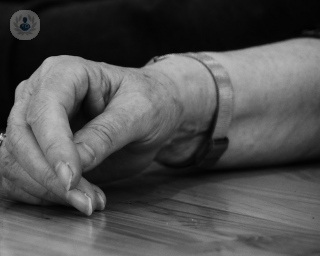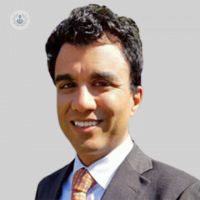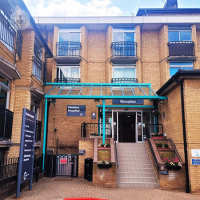Spinal osteoarthritis
Mr Ramsey Chammaa - Orthopaedic surgery
Created on: 11-13-2012
Updated on: 07-18-2023
Edited by: Kate Forristal
What is spinal arthritis (or spinal osteoarthritis)?
Spinal arthritis is a degenerative disease affecting the cartilage of the intervertebral discs, which become less elastic and are no longer able to absorb the impacts caused by body movements. Spinal arthritis may affect the neck (cervical arthritis) or lower back (lumbar arthritis). Spinal arthiritis should be seen by an orthopaedic surgeon.
There are three types of spinal arthritis, defined by the cause:
- Primary or type I spinal arthritis: A hereditary disease with familial predisposition. No known causes.
- Secondary or type II spinal arthritis: Related to levels of steroid hormones, especially oestrogens. Type II arthritis develops in the first years of menopause.
- Type III spinal arthritis: Closely linked to age; considered part of the ageing process.

Symptoms of spinal arthritis:
The disease may be asymptomatic or have symptoms such as:
- Pain in the back or spinal column
- Rigidity of the spinal column
- Loss of flexibility in the spinal column
- Increase in pain with activity, or after remaining in a standing or seated position for a long time.
- Numbing or “electric shock” pain radiating to the limbs
What are the causes of spinal arthritis?
It can be concluded that genetic, nutritional, traumatic and mechanical factors all play a role in the appearance and progression of this degenerative disease.
Some of these factors are:
- Ageing: Around aged 30-40, initial signs of spinal arthritis at some level of the spinal column are normal X-ray findings, whether the patient is experiencing pain or not. In addition, it increases exponentially from age 50.
- Sex: There is a higher prevalence of this disease in women, particularly in women aged over 50-55 years, which coincides with the menopause and the accompanying reduction in oestrogen levels.
- Genetics: Spinal arthritis may be a hereditary disease.
- Professional activity: repetition of joint movements may lead, in the long term, to overloaded joints.
- High physical activity: elite sportspeople have a higher risk of developing the disease.
- Sedentary lifestyle: A sedentary lifestyle leads to weakness of the abdominal muscles and the back, which are no longer capable of supporting the column during movements.
- Obesity: does not seem to participate in the onset of arthritis, but can aggravate it in specific joints such as the knees.
- Traumatic injury: fractures and injuries may act as triggers.
Can spinal osteoarthritis be prevented?
If you are at risk of developing spinal arthritis, it is recommended that you adopt a healthy, balanced diet, perform physical activity in moderation, avoid professional activities that entail overexertion (heavy loads) and avoid obesity. Experts also recommend that you exercise caution during contact sports like football or rugby, as these are not recommended for patients with arthritis.
What is the treatment?
Treatment may be non-surgical or surgical.
Non-surgical treatment: The primary goal when treating spinal arthritis is to restore the patient’s capacity to carry out their everyday activities without pain, via non-surgical or conservative procedures.
- Medications (NSAIDs, paracetamol, opioid analgesics)
- Physiotherapy (exercise programme, hot or cold, water therapy, massage, TENS)
- Weight loss
Surgical treatment: If non-surgical measures prove to be ineffective, surgical options should be chosen.
There are different types of surgery for different patients:
- Decompression
- Decompression and posterolateral fusion
- Anterior lumbar interbody fusion
- Microdiscectomy
- Disc replacement






